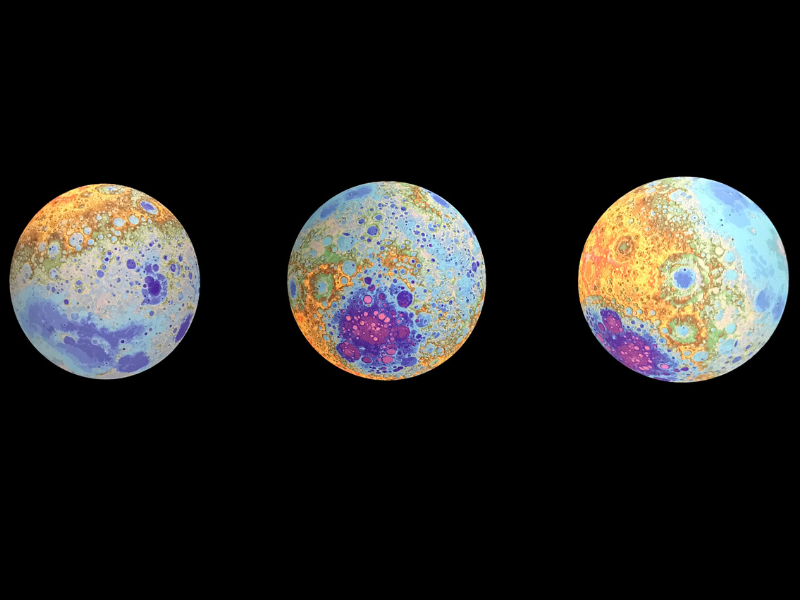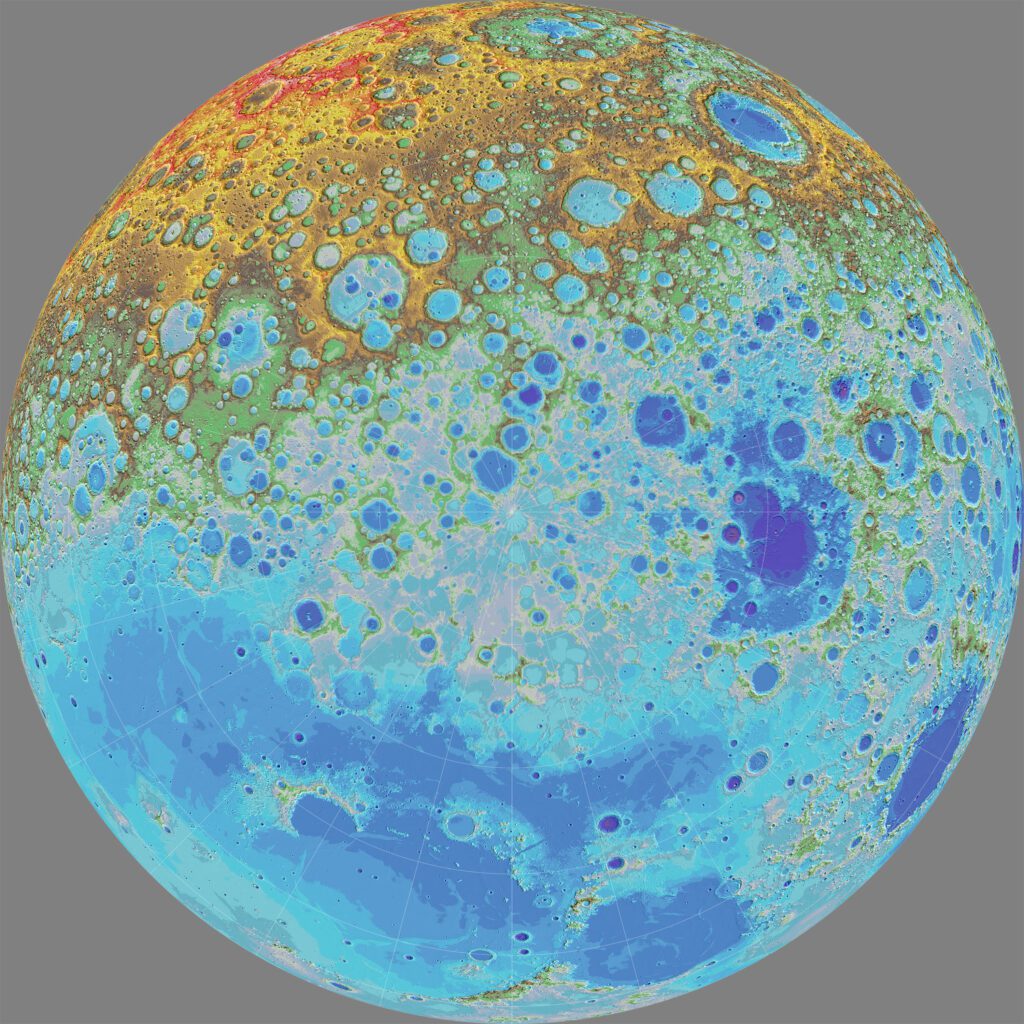A New Moon Rises
Humans last stepped foot on the Moon more than 50 years ago, but now you can experience its surface like never before through images taken by the Lunar Reconnaissance Orbiter Camera (LROC) between 2009 and 2015.

- Permanent
- Level 2
- Included in Admission
- All age groups
Explore the Moon, One Pixel at a Time in “A New Moon Rises”: Unveiling Lunar Mysteries from Orbit
Humans last stepped foot on the Moon more than 50 years ago, but now you can experience its surface like never before through images taken by the Lunar Reconnaissance Orbiter Camera (LROC) between 2009 and 2015.
These large-scale, highly detailed photographs provide unique views of the lunar surface that reveal stunning landscapes, both alien and familiar, with a focus on six themes:
- Global Views
- Exploration Sites
- Discoveries
- Vistas
- Topography
- Craters
Experience the grandeur and wonder of our closest celestial neighbor when you visit A New Moon Rises.
A New Moon Rises was created by the National Air and Space Museum and the Arizona State University and is organized for travel by the Smithsonian Institution Traveling Exhibition Service.

About the Lunar Reconnaissance Orbiter Camera (LROC)
Its high-resolution imaging system has taken over a million surface images and revealed new details. The lunar landscapes presented here are a small but magnificent sample of LROC images. They provide a glimpse of recent discoveries and inform our nearest and most familiar celestial neighbor to be strikingly beautiful, still full of mystery and genuinely exceptional.

A diagram of the Lunar Reconnaissance Orbiter’s science instruments.
- Lunar Reconnaissance Orbiter Camera (LROC): Provides global imaging of the lunar surface. Consists of a Wide Angle Camera (WAC) and two identical Narrow Angle Cameras (NAC).
- Cosmic Ray Telescope for the Effects of Radiation (CRaTER): Measures the lunar radiation environment.
- Diviner Lunar Radiometer (DLRE): Provides thermal mapping to determine lunar surface and subsurface temperatures.
- Lyman Alpha Mapping Project (LAMP): Maps the lunar surface in the far ultraviolet in search of water ice.
- Lunar Exploration Neutron Detector (LEND): Maps distribution of hydrogen in the lunar soil.
- Lunar Orbiter Laser Altimeter (LOLA): Maps the topography and surface roughness of the Moon.
- Mini-RF Synthetic Aperture Radar: Provides radar imaging of the lunar surface in search of water ice.




Getting Here
Discovery Place Science is located in the heart of uptown Charlotte and is accessible by car, train or foot. Discovery Place Science Parking Deck is at the corner of Church and 6th St. in Uptown Charlotte.